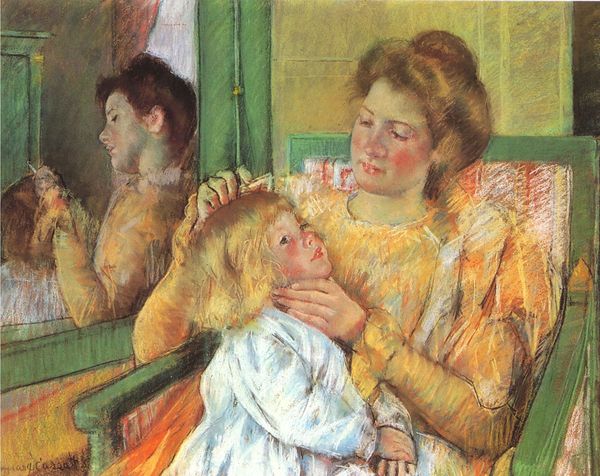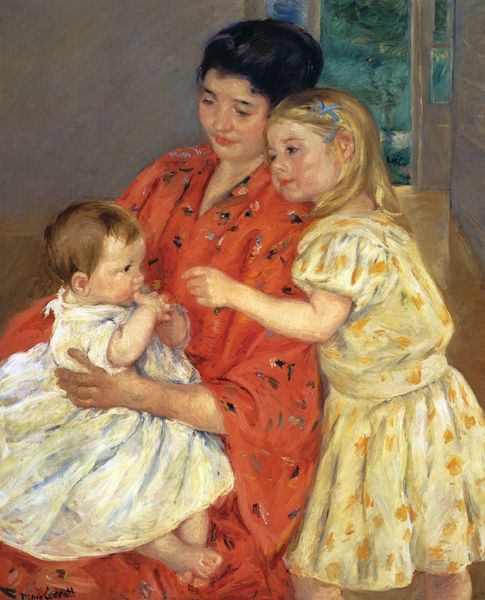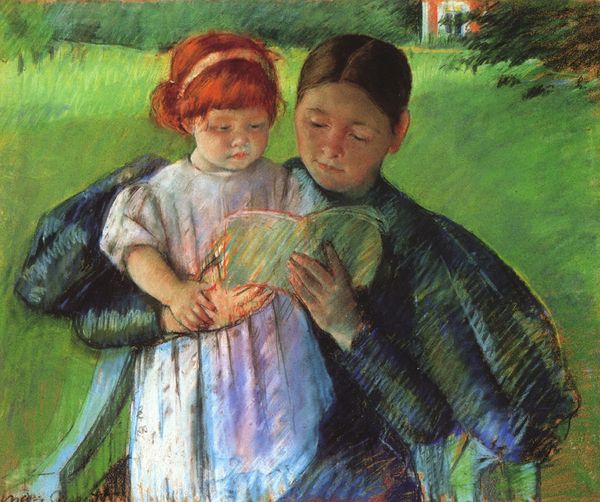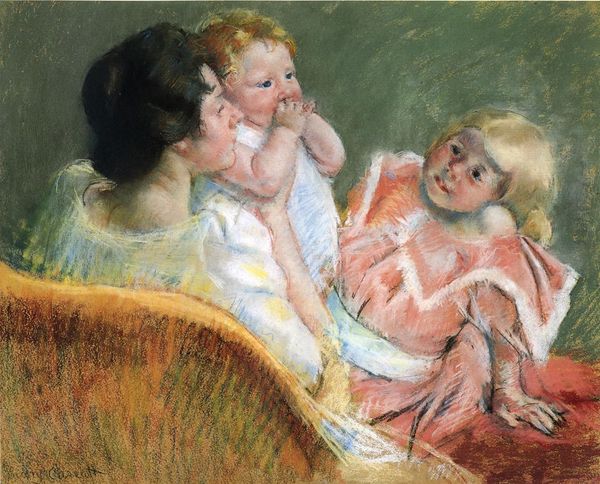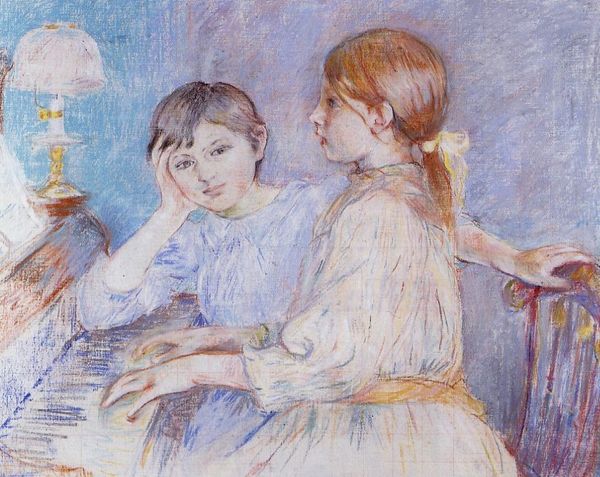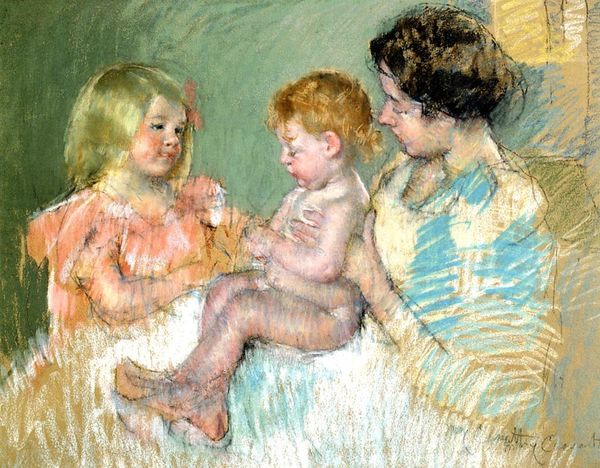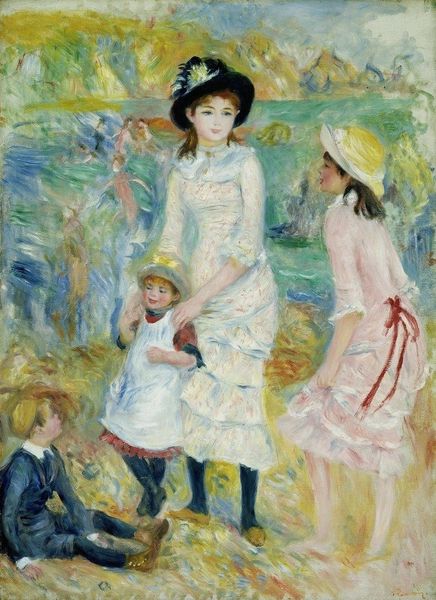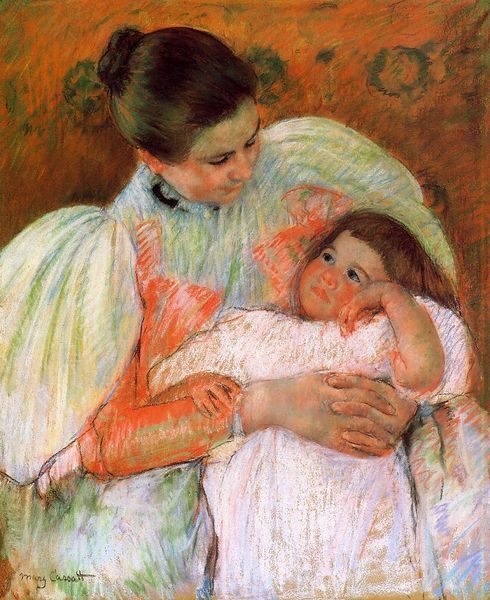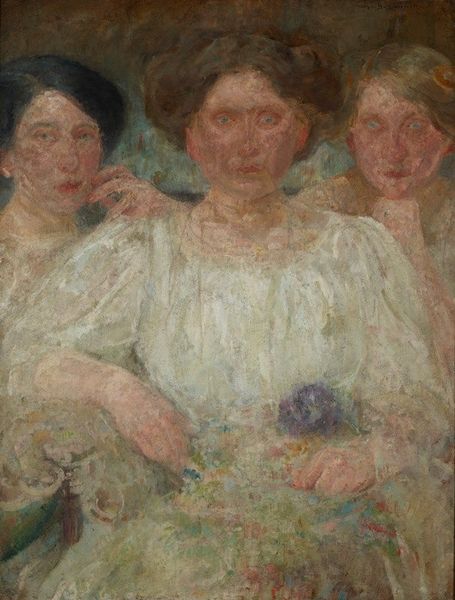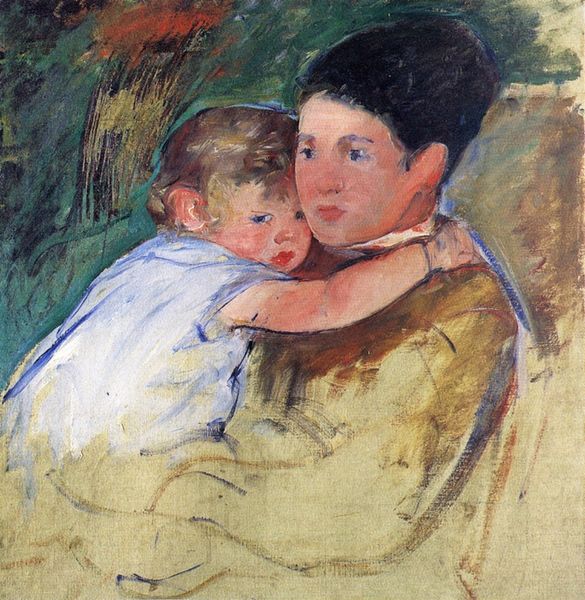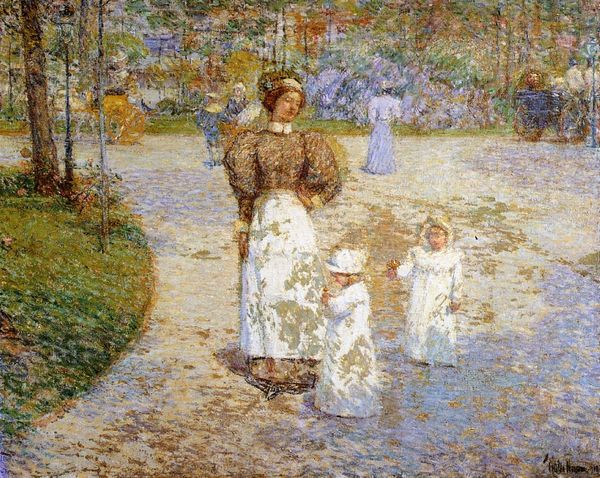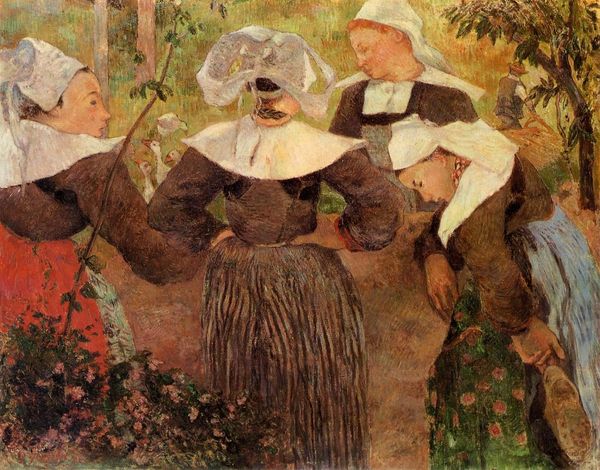
Copyright: Public Domain: Artvee
Editor: Mary Cassatt's "Women Admiring a Child," likely executed around 1897 with oil paints and possibly pastels, offers an intimate glimpse into a seemingly private moment. I’m struck by the gaze of the women; it's almost reverential. What do you make of this quiet scene? Curator: Cassatt, a key figure in Impressionism and a champion of women's artistic voices, consistently depicted women in domestic spheres, offering a counter-narrative to the male-dominated art world. How do you think this challenges traditional artistic themes, given the socio-political context of late 19th-century Western art? Editor: Well, by centering women's experiences, especially motherhood and female companionship, she directly contrasts the common portrayal of women as idealized objects of desire. It seems like a deliberate move. Curator: Precisely. Consider the role of museums and galleries at the time. Were they actively representing women artists, or prioritizing certain kinds of feminine imagery? Cassatt's choices disrupted established patterns of representation. The choice of portraying mothers and children could be a subtle way to reclaim female identity, but do you think it would be read as overtly political at the time? Editor: Maybe not overtly. I can see how subtly shifting the focus onto everyday life, while using an impressionistic style that suggested rather than explicitly stated, would challenge the existing structures without creating an overt revolutionary statement. It feels nuanced. Curator: And consider the politics of viewing itself. Who were Cassatt’s intended viewers? Were these works meant to circulate primarily among women, or to intervene in a broader public discourse? Editor: That's a good point, one I hadn’t considered. This changes how I interpret Cassatt's figures in the broader context of the art world back then. It sounds as if her choice was as much about breaking into a man's world than just expressing herself. Curator: Absolutely. These seemingly intimate scenes became subtle yet significant political statements about women's visibility and agency in the art world and beyond. Editor: Thanks, I'll definitely look at Cassatt's paintings differently now, with this new historical lens. It's great to understand not only the artistry but also the quiet cultural rebellion at play.
Comments
No comments
Be the first to comment and join the conversation on the ultimate creative platform.
